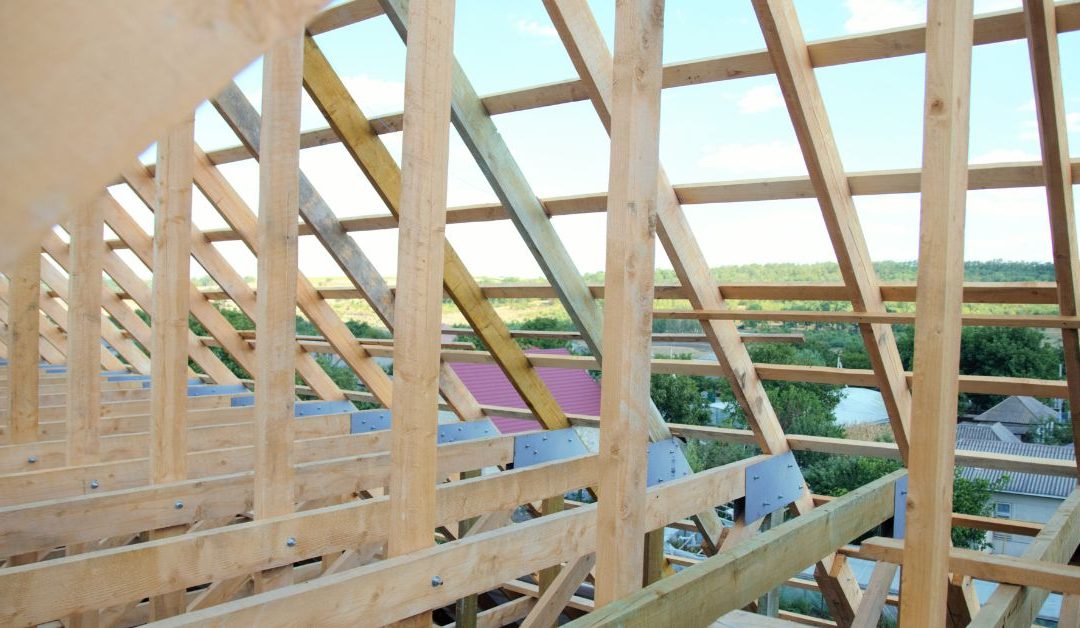Moroccan woodworking has been a part of the country’s culture for a very long time. It has influenced things like buildings, art, and the sense of community. We’ll explore how it has changed over the years and how people today are keeping the tradition alive. We’ll also talk about why it’s still important in Morocco today, even with new technologies. By learning about all these things, we can understand how woodworking shapes the lives and communities in Morocco.
Historical Overview Of Moroccan Woodworking
For many years, Moroccan woodworking has been an important part of the country’s culture. Craftsmen started creating beautiful pieces with hand-painted designs and traditional materials long ago. They made furniture and decorative items like boxes and door frames. Families passed down these skills from one generation to the next and used them to support themselves.
The craftsmen used special tools like chisels, saws, and lathes to create their works of art. Their craftsmanship was much admired then and is still respected today.
Moroccan woodworking has grown from a family business to something much bigger. It now provides jobs and keeps the tradition alive while inspiring future generations to be creative. The colorful designs and patterns are much loved all over the world for their beauty and cultural importance.
Looking at the tools and techniques used in Moroccan woodworking today, we can learn even more about this fascinating craft.
Traditional Tools And Techniques
For centuries, Moroccan woodworking has been an important part of their culture. Artisans in Morocco have mastered the craft of making intricate wooden objects like furniture and toys. They rely on traditional tools like saws and chisels, but they can use modern machines for bigger projects. One famous example of their work is the carved cedarwood doors found in Moroccan cities. Each door tells a unique story. Moroccan artisans make chairs, tables, lamps, and decorative boxes. These are then mixed with geometric patterns inspired by Islamic architecture. These designs show the connection between their craftsmanship and local traditions. Moroccan craftsmen need to keep getting better at what they do and use new technology to stay competitive in the world. This way, they can continue their artistic legacy while adapting to new times. Now, let’s talk about the connection of Moroccan woodworking to architecture.
Role In Moroccan Architecture
Woodworking has always been important in Moroccan architecture.
It provides both structural and decorative elements. Skilled wood carvers create intricate designs and sculptures using traditional techniques.
In recent years, there has been a growing interest among people in preserving these ancient woodworking methods. I’m proud to be part of the effort to pass on these skills to future generations.
I love showing off the beauty of Moroccan woodworking and the amazing talent of the artisans. It’s incredible to see what they can create with their skills and patience.
Traditional Moroccan Woodworking
For hundreds of years, Moroccan woodworking has been an important part of architecture and design. Artisans in Morocco have worked hard to create beautiful things from wood.
People in Morocco value this craft as an important part of their culture and share it with other cultures. From fancy furniture to detailed doors, woodworking adds a special touch to many homes in Morocco.
It’s a way as well for families and communities to make money. Modernization made new tools and technology speed up the process. But, the traditional techniques taught from one generation to another are still very important.
Moroccan Wood Carving Techniques
Moroccan wood carving techniques have changed and improved over time. Now, there are many different styles in different regions.
Craftsmen from different parts of Morocco use special tools and have their own way of making beautiful things out of wood.
These artisans care about what they do, and they want to make sure they can keep doing it for a long time. They use sustainable practices to protect the environment.
Each piece they make shows how skilled and dedicated they are. It’s their way of making sure that Moroccan architecture stays amazing for a long, long time.
Preservation Of Moroccan Woodworking Art
Moroccan woodworking art is an important part of Morocco’s culture and buildings.
To make sure it can continue, we need to use forests in a sustainable way. That means cutting down trees in a way that doesn’t harm the environment and leaves enough for the future.
Using forests with care helps the people in nearby communities. It creates jobs in the timber industry and brings in tourists who want to see the beautiful wooden crafts.
By planning and protecting these traditions, we can enjoy Moroccan woodworking for a long time.
Artisanal Craftsmanship
Moroccan woodworking is a special craft that has stayed down for generations. It is a way to keep the culture and traditions alive. People create beautiful furniture, jewelry boxes, carvings, and musical instruments. They are using traditional techniques mixed with modern designs to craft these masterpieces. It’s not only about preserving heritage, but about earning money for families too.
Women have become skilled artisans in woodworking. They make amazing pieces that people want to buy in domestic and worldwide. By learning these skills, women can be independent and keep their traditions alive.
Even as time goes on and things change, Moroccan woodworking remains an important part of the country’s history and identity.
Cultural Identity And Symbolism
Woodworking is very important in Moroccan culture. It connects the past and present. Each piece of furniture has a special meaning for the person who makes it and the person who uses it.
Today, woodworking still represents people’s identity and their connection to their ancestors.
The materials used in woodworking are important. People in Morocco connect different types of wood to different parts of the country or specific tribes. They believe that choosing the right wood brings good luck and success when making things like doors, tables, and chairs. People use these items in ceremonies like weddings and celebrations. It’s important to choose the materials because they believe that if they are not chosen the proper way, bad things might happen.
Even though things have changed over time, the tradition of woodworking is still strong. Artisans now use some modern tools and machines besides to traditional methods, which are still valued.
To learn woodworking, people usually become apprentices and learn from experienced craftsmen. This is only as important today as it was a long time ago. By building on this knowledge, woodworking will continue to be an important part of Moroccan culture for many years to come.
Revival Of The Craft
The history of Moroccan woodworking has had a big influence on society. We need to bring back the woodworking artisans and their craft so that future generations can enjoy it too. Let’s promote the appreciation of woodworking to make sure it stays important for a long time. We can keep this craft alive by supporting the artisans who do it. It’s important to remember their history and the impact they had on society. By sharing their stories and celebrating what they did, we can make sure that Moroccan woodworking keeps thriving.
Influences Of Traditional Craftsmen
The revival of Moroccan woodworking shows how important it is to their customs and culture. It’s not only a part of everyday life, but it helps people make money too. The craftsmen who passed down their skills for generations worked hard to make their woodwork the best it could be. Now, both locals and visitors became interested in their work, which helps the economy and improves living conditions. This revival is especially good for people in rural areas, where jobs can be hard to find. Traditional crafts like woodworking can make a difference for the future while keeping important parts of the past alive.
Re-Establishing The Woodworking Artisans
Woodworking is an important part of Moroccan culture that has been around for a long time. It’s coming back now, which is great because it helps the economy and keeps the tradition alive. Skilled craftsmen are working hard to make beautiful pieces using carving and joinery techniques. This helps people in rural areas have better lives and shows that traditional crafts are important for our future and our past.
Promoting The Appreciation Of Woodworking
We want people to know about woodworking and appreciate its importance. We can do this by teaching others and showing our work at exhibitions. We can also use technology like social media to reach more people and share our skills. This helps us and others in the industry too. By promoting awareness and appreciation of woodworking, we can keep our traditions alive and help our culture thrive.
Contemporary Moroccan Woodworking
Moroccan woodworking is making a big comeback! People are starting to appreciate its beauty and value. In fact, about 20% of furniture in Morocco is now made using traditional techniques. This shows how they are using ideas from around the world and materials from their own country to make cool things that celebrate their culture.
Woodworking is important in many communities across Morocco. Skilled craftsmen use modern tools like CNC machines to make intricate patterns. They create unique items from everyday objects. People from all over the world want to buy these handmade pieces because they are special and have stories behind them.
It will be exciting to see how technology continues to shape this industry and bring beautiful wooden works back into our lives.
Impact Of Modern Technology
I’ve been studying how modern technology has changed Moroccan woodworking, and it’s been amazing!
With automation, woodworkers can make things faster and cheaper.
Projects now take less time, so they can make more detailed designs.
The quality of their work has improved too, thanks to better tools and techniques.
Because of modern machines, woodworkers can make more things in less time, which is great for their business.
Thus, modern technology has made Moroccan woodworking better and more efficient.
Automation
Technology has changed the Moroccan woodworking industry a lot. Automation, like using machines to do tasks, has made a big difference. It helps save energy, improves skills, and saves money for manufacturers. Machines can do some of the work , so it’s faster and more consistent.
Automation has made factories more efficient and allows them to make better products with less time and money. One cool example of automation is lasers. They can cut detailed shapes without needing people to do it. This helps craftsmen make their designs better and faster.
When automation first started, some people became worried about losing jobs. But actually, it created new jobs for people who can maintain and fix the machines.
In the end, automation has had a big impact on Moroccan woodworking. It has made things better in many ways, like making products better and saving energy.
Productivity Increase
Automation has made a big difference in Moroccan woodworking. It helps factories make more things with less effort. This saves money and makes the process more efficient. Laser cutting machines are a great example of this. They can cut shapes faster without needing people to do it by hand. This saves time and makes the products even better. Because of these improvements, the woodworking industry in Morocco is doing well. It has created new jobs for people who take care of the machines. Thus, modernization has had a big impact on woodworking in Morocco.
Cost Reduction
The use of modern technology in Moroccan woodworking has made it easier and cheaper to make high-quality products. Machines like laser cutters need less human effort, which saves time and money. Because of these improvements, businesses can make more products and spend less money, which is good for everyone. Using machines to make furniture in Morocco is helping the woodworking industry be more productive and make more money.
Preservation Of The Trade
For many years, woodworking has been an important part of Moroccan culture. The traditions that have stayed through generations are what make woodworking special, not only the tools.
- To keep this tradition alive, we can:
- Use materials from our local area as much as we can.
- Teach new people the skills of woodworking.
- Use both old and new ways of doing things.
- Create a place where woodworkers can work together and learn from each other.
By doing these things, we can make sure that future generations know about and appreciate Moroccan woodworking.
Future Of The Craft
What does the future hold for Moroccan woodworking? Well, sustainability will be important. It means keeping the old ways alive while using materials that are good for the environment, like bamboo and recycled wood. Some craftsmen are even trying out new materials like metal and plastic in their designs. These changes will help Moroccan woodworking stay popular and grow even more. It’s important to keep this special tradition alive for generations to come. Let’s celebrate the incredible skills of Moroccan woodworkers and look forward to what they will create in the future!
Frequent-Asked Questions
What Is The Average Cost Of A Moroccan Woodworking Project?
The cost of Moroccan woodworking projects can vary depending on their complexity and the materials needed. When the designs are more complicated, it usually requires skilled workers, which can make the cost higher.
In general, a simple project can cost around $50 to a few hundred dollars. But if the project has lots of details or needs very precise work, it can cost even more. It’s good to keep in mind that cheaper options may not be as good as the ones made by skilled artisans who have been doing it for a long time. The experienced artisans make high-quality products because they have practiced a lot and are good at what they do.
What Are The Most Popular Types Of Wood Used For Woodworking In Morocco?
Moroccan woodworking is famous for using sustainable practices and cultural influences. Artisans have been making beautiful things from different types of wood for a long time. Cedar and juniper are two popular woods that craftsmen use. Cedar is great for carving detailed shapes and designs, while juniper is light and strong, making it perfect for modern projects. Both woods are important in Moroccan woodworking. This is because they show how tradition and innovation can come together to create amazing things.
What Type Of Training Do Moroccan Woodworkers Need?
For many years, Moroccan woodworking has been a special craft that requires lots of training and skill. People in the culture believe that the best way to learn is by working with a skilled craftsmen who can teach you techniques, tools, and materials. This kind of learning happens in a workshop where you can practice and study about different types of wood and how to design furniture.
Nowadays, more people are choosing to take formal classes or programs to become certified woodworkers. This helps them improve their skills even more.
What Are The Environmental Impacts Of Woodworking In Morocco?
Moroccan woodworking has been an important part of their culture and economy for a long time. But, people have only recently realized the impact it has on the environment. It’s important to conserve water and use sustainable practices when cutting down trees. Good thing is that organizations are now teaching workers how to do this the proper way. This is a big change from before when people didn’t pay as much attention to these issues.
How Does Moroccan Woodworking Compare To Other Countries In The Region?
It’s interesting to compare Moroccan woodworking to other countries in the region.
In different places, people use their own traditional techniques and materials for woodworking.
Like anywhere else, you need skill and knowledge to do woodworking projects well.
These skills have stayed through generations in cultures across the Middle East and North Africa.
Sometimes, they even use new technologies or modern methods to make beautiful things with a modern twist!
It will be exciting to keep learning about how woodworking has changed over time and how it compares to other places in the world.
Moroccan woodworking is a traditional craft that has been around for a long time. Skilled artisans make beautiful furniture and other things using different types of wood.
The cost of these projects can change depending on the materials and how complicated the design is. Woodworkers learn their skills from older generations. Thus, they get formal education or training from experienced craftsmen.
Even though woodworking can have some impact on the environment, it is one of the most sustainable crafts in Morocco!
Let’s appreciate the influence of this ancient skill on our society throughout history.







